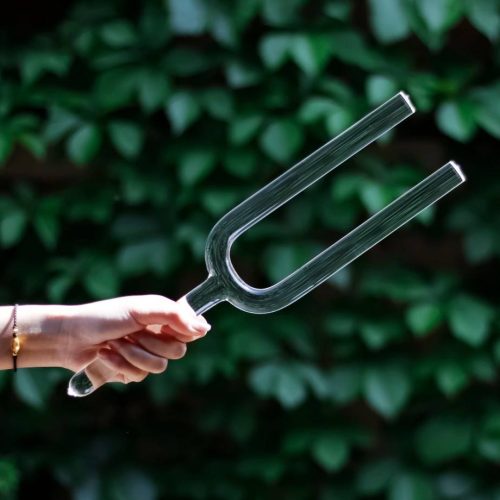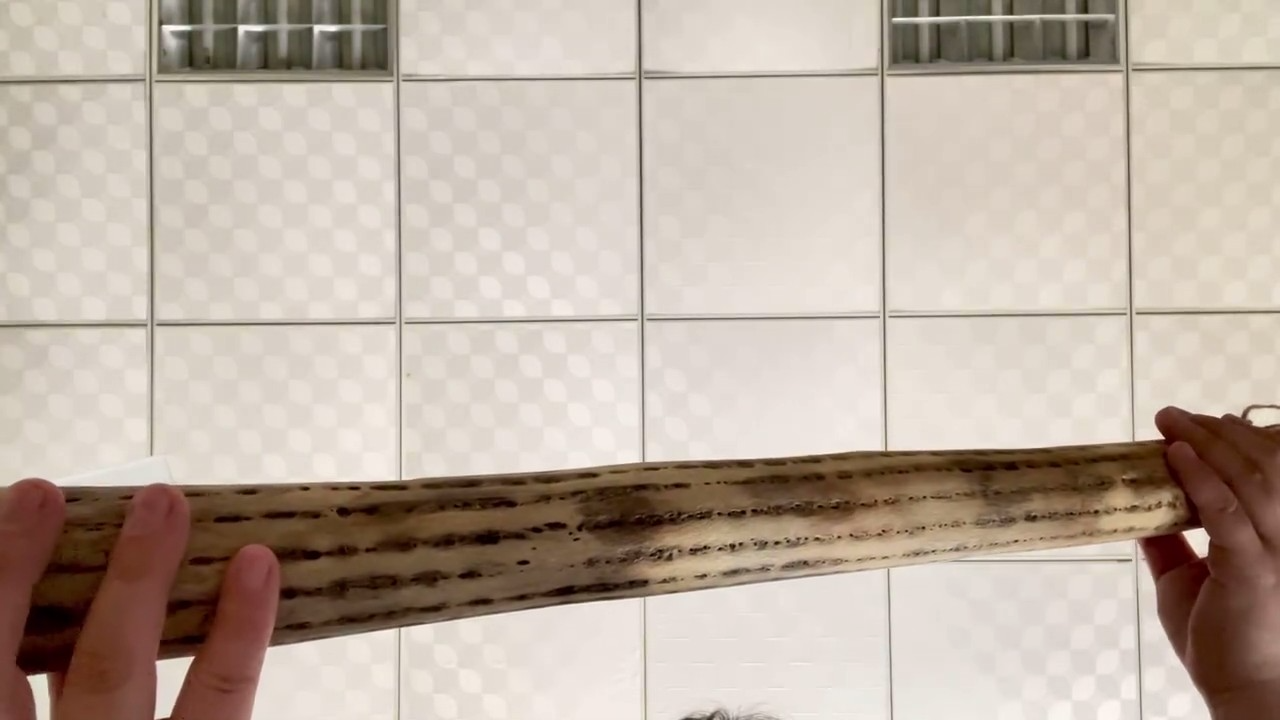Crystal tuning forks represent a revolutionary advancement in precision sound instruments, combining the pure resonant properties of quartz crystal with the precise frequency generation capabilities of traditional tuning fork design. These remarkable instruments transcend conventional metal tuning forks by offering superior tonal purity, extended sustain times, and unique acoustic characteristics that make them invaluable tools for musical applications, therapeutic practices, and consciousness exploration.
The crystalline structure provides exceptional frequency stability and harmonic clarity that surpasses metal alternatives, while the inherent piezoelectric properties of quartz create subtle sound amplification effects that enhance acoustic output without compromising tonal purity. When properly crafted and skillfully used, crystal tuning forks produce remarkably pure tones that serve as perfect reference standards for musical tuning, powerful tools for therapeutic intervention, and elegant instruments for artistic expression.

Construction Design and Product Series
Basic Structural Components
The dual-arm configuration forms the fundamental architecture of crystal tuning forks, requiring precise geometric relationships between arm length, width, and thickness to achieve accurate frequency generation and optimal acoustic performance. The symmetrical design ensures balanced vibration patterns that produce pure fundamental frequencies without unwanted harmonic distortion or frequency drift. Each arm must maintain identical dimensions within extremely tight tolerances to prevent beat frequencies and tonal irregularities that could compromise the instrument’s precision.
The arm length primarily determines the fundamental frequency, with longer arms producing lower pitches and shorter arms generating higher frequencies. The mathematical relationship between length and frequency follows precise acoustic principles that enable accurate frequency prediction and control during the manufacturing process. Width and thickness modifications provide fine-tuning capabilities that allow manufacturers to achieve exact frequency targets while maintaining structural integrity and optimal acoustic properties.
The handle design significantly influences both playing comfort and acoustic transmission characteristics. The handle serves as both a grip point for manipulation and a coupling interface for transmitting vibrations to other objects or surfaces. Optimal handle proportions balance comfortable grip dimensions with effective vibration transmission, ensuring that practitioners can easily manipulate the instrument while maximizing acoustic output and maintaining precise frequency generation.
Surface finish quality directly affects acoustic efficiency and visual appeal, with mirror-like crystal surfaces providing maximum acoustic transmission while creating stunning visual effects. The precision of surface preparation influences the instrument’s ability to maintain pure tones and extended sustain times, while also determining the overall aesthetic quality that makes crystal tuning forks attractive display pieces as well as functional instruments.
Material Classifications and Characteristics
Clear quartz crystal provides the standard material choice for most applications, offering exceptional transparency, acoustic purity, and frequency stability that makes it ideal for precision musical and therapeutic applications. The natural piezoelectric properties inherent in quartz create subtle acoustic enhancement effects that amplify sound output while maintaining perfect tonal clarity. Clear quartz also provides maximum visual appeal with brilliant transparency that showcases the instrument’s geometric precision.
Colored quartz varieties introduce distinctive tonal characteristics and aesthetic qualities that many practitioners find enhance specific applications or personal preferences. Amethyst tuning forks produce slightly warmer tones with enhanced harmonic richness that many find particularly soothing for meditation and relaxation applications. The purple coloration adds visual beauty while maintaining all the acoustic advantages of high-quality quartz crystal.
Rose quartz creates exceptionally gentle, soft tones with subtle warmth that supports heart-centered practices and emotional healing work. The pink coloration provides distinctive visual appeal while the material properties generate tones that many practitioners find particularly nurturing and emotionally supportive. Rose quartz tuning forks often become preferred tools for therapeutic applications requiring gentle, non-threatening acoustic intervention.
Smoky quartz generates deeper, more grounding tones with enhanced stability characteristics that provide excellent support for centering and grounding practices. The darker coloration creates sophisticated visual appeal while the acoustic properties produce tones that many find particularly effective for establishing stability and emotional balance during therapeutic sessions.
Synthetic quartz materials offer controlled acoustic properties and manufacturing consistency that appeals to practitioners requiring predictable performance characteristics. Laboratory-grown crystals provide superior optical clarity and acoustic uniformity while eliminating natural variations that might affect tonal consistency across multiple instruments. The controlled growth process enables optimization of crystal structure for specific acoustic applications, resulting in instruments with enhanced sustain, improved frequency response, and more predictable tonal characteristics.
Frequency Specifications and Tuning Systems
Standard musical pitch series follow conventional tuning systems that make crystal tuning forks compatible with traditional musical instruments and established tuning practices. The A440Hz reference standard provides the foundation for complete chromatic series that support comprehensive musical applications from orchestral tuning to solo practice. Twelve-tone equal temperament systems enable harmonic compatibility with modern musical instruments while maintaining the acoustic advantages of crystal construction.
Octave relationship sets provide harmonically related frequencies that create pleasing acoustic interactions when used simultaneously or in sequence. Multiple octaves of the same fundamental frequency enable applications requiring specific pitch relationships while maintaining tonal consistency across the frequency range. These harmonic relationships prove particularly valuable for therapeutic applications where specific frequency ratios support particular healing intentions.
Therapeutic frequency series incorporate specific frequencies that practitioners believe support particular healing and consciousness expansion applications. The 528Hz “love frequency” represents one of the most popular therapeutic applications, with practitioners using this frequency to support heart opening and emotional healing work. Other therapeutic frequencies address specific chakras, emotional states, or consciousness levels according to various healing traditions and practices.
Custom frequency services enable practitioners to obtain instruments tuned to specific frequencies that match particular requirements or personal preferences. Professional tuning capabilities can achieve remarkable precision, often within fractions of a hertz, enabling applications requiring exact frequency matching or specific harmonic relationships. Custom tuning also supports research applications and specialized therapeutic protocols that require precise frequency control.
Playing Techniques and Operation Skills
Basic Activation Methods
Strike activation using appropriate implements provides the most common method for initiating crystal tuning fork vibration, with different striking tools producing varying tonal characteristics and attack qualities. Rubber mallets create gentle activation with smooth attack characteristics that emphasize the fork’s natural resonance while minimizing harsh transients. The soft impact preserves crystal integrity while producing clear, sustained tones ideal for most musical and therapeutic applications.
Wooden striking tools generate more defined attack characteristics with enhanced harmonic content that adds complexity to the initial strike sound. Hardwood implements produce brighter, more articulated activation, while softwood tools offer warmer, more mellow characteristics. The striking technique requires precise aim and controlled force to achieve consistent results while protecting the crystal structure from damage.
Metal activation tools create brilliant, penetrating activation with maximum harmonic excitement and extended sustain times. The metallic contact generates complex overtone interactions that add richness and complexity to the sound, though care must be taken to use appropriate force that maximizes acoustic output while protecting crystal integrity. Different metals produce varying tonal characteristics, with brass offering warmth and steel providing brightness.
The striking location significantly influences tonal characteristics and acoustic output, with different positions along the fork arms producing varying sound qualities. Strikes near the free ends generate maximum amplitude and volume, while strikes closer to the handle produce more controlled activation with enhanced harmonic content. Practitioners develop sensitivity to these positional relationships that enables precise control over acoustic characteristics and dynamic range.
Friction Activation Techniques
Friction activation using specialized tools enables continuous tone generation that transforms crystal tuning forks from percussion instruments into sustained tone generators. Leather-wrapped friction implements provide warm, organic activation with smooth attack characteristics and natural vibrato effects. The leather surface grips the crystal smoothly while maintaining consistent contact pressure, enabling long, flowing tones that can be maintained indefinitely with proper technique.
Rubber friction tools offer predictable contact characteristics and consistent tonal response across different environmental conditions. The rubber material provides reliable grip without excessive pressure requirements, making it easier to maintain steady friction contact during extended playing sessions. Different rubber compounds produce varying tonal characteristics, with softer materials creating warmer tones and harder compounds generating brighter, more defined sounds.
Wooden friction implements create distinctive organic tones with natural texture variations that add character to sustained sounds. The wood grain interacts with the crystal surface to produce subtle rhythmic variations and harmonic fluctuations that create living, breathing tones. Different wood types offer varying friction characteristics and tonal qualities, with harder woods providing more definition and softer woods creating smoother, more flowing sounds.
Pressure control during friction activation enables real-time pitch and tonal manipulation that rivals the expressiveness of traditional string instruments. Light pressure produces gentle, floating tones with subtle harmonic content, while increased pressure generates more intense, harmonically rich sounds with enhanced volume and projection. Skilled practitioners develop sensitivity to pressure relationships that enable smooth pitch bending and dynamic expression throughout sustained passages.
Advanced Performance Techniques
Volume control mastery enables practitioners to achieve precise dynamic expression ranging from barely audible whispers to powerful, room-filling tones. Micro-dynamic control requires exceptional sensitivity to striking force and friction pressure, with subtle variations producing significant changes in acoustic output. Gradual volume changes create musical phrasing that adds emotional expression and artistic sophistication to crystal tuning fork performance.
Tonal color manipulation through hand positioning and contact variations enables subtle acoustic modifications that enhance musical expression. Finger placement near vibrating arms affects harmonic content and sustain characteristics, while palm proximity creates natural dampening effects that control sustain duration and acoustic envelope. These techniques require practice to master but provide valuable expressive tools for sophisticated musical applications.
Vibrato and tremolo effects can be created through controlled movement variations during friction activation or through subtle environmental manipulations that affect acoustic transmission. Hand vibrato creates gentle pitch fluctuations that add warmth and expression to sustained tones, while tremolo effects vary acoustic amplitude to create rhythmic pulsing that enhances musical interest and emotional impact.
Harmonic layering techniques using multiple tuning forks enable complex acoustic textures that transcend the limitations of single-instrument performance. Careful selection of harmonic relationships creates pleasing chord structures and rich acoustic environments that support sophisticated musical development. Sequential activation creates flowing harmonic progressions, while simultaneous activation produces complex interference patterns that generate unique acoustic phenomena.
Application Scenarios and Practice Methods
Musical Tuning and Calibration
Instrument tuning applications represent the most traditional use for crystal tuning forks, providing precise reference frequencies for tuning pianos, string instruments, woodwinds, and other musical instruments. The exceptional frequency stability and pure harmonic content make crystal tuning forks superior reference standards that enable accurate tuning under various environmental conditions. Professional musicians often prefer crystal tuning forks for their reliability and acoustic clarity.
Piano tuning applications require exceptional precision and stability that crystal tuning forks provide through their superior frequency accuracy and environmental stability. The pure tones enable precise beat frequency detection that facilitates accurate unison tuning, while the extended sustain times provide adequate duration for complex tuning procedures. Professional piano technicians increasingly adopt crystal tuning forks for their superior performance characteristics.
String instrument tuning benefits from the exceptional harmonic clarity that enables precise unison and interval tuning across all string positions. The pure reference tones make it easier to detect beat frequencies and achieve accurate pitch relationships, while the acoustic clarity provides excellent audibility even in noisy environments. String players often find crystal tuning forks more pleasant to use than electronic tuners for regular practice and performance preparation.
Wind instrument tuning applications utilize the pure harmonic content and extended sustain times that enable accurate intonation across the full range of woodwind and brass instruments. The acoustic clarity makes it easier to match pitch accurately, while the harmonic purity provides excellent reference standards for interval tuning and ensemble work. Wind players appreciate the natural acoustic reference that crystal tuning forks provide compared to electronic alternatives.
Meditation and Relaxation Applications
Personal meditation practices benefit tremendously from the pure, sustained tones that crystal tuning forks generate, providing gentle acoustic support that enhances focus and promotes deep relaxation states. The harmonic clarity creates non-intrusive background tones that support concentration without creating distraction, while the natural acoustic decay provides peaceful transitions between sound and silence that enhance meditative experiences.
Breathing synchronization techniques use sustained crystal tuning fork tones to guide and regulate breathing patterns during meditation practice. The extended sustain times enable long, slow breathing cycles that promote deep relaxation and enhanced oxygen uptake, while the pure tones provide gentle acoustic anchors that help maintain focus during extended practice sessions. Many practitioners find this acoustic guidance more natural and effective than electronic alternatives.
Group meditation applications utilize crystal tuning forks to create unified acoustic environments that support collective practice and shared experiences. The pure tones provide common acoustic references that help synchronize group energy and attention, while the harmonic clarity creates peaceful atmospheres that enhance individual and collective meditation outcomes. Group leaders appreciate the simplicity and reliability of crystal tuning fork acoustic support.
Sleep enhancement applications employ specific frequencies and gentle acoustic environments that support natural sleep rhythms and promote deeper, more restorative rest. The pure tones create calming acoustic backgrounds that mask environmental disturbances while promoting relaxation responses that facilitate easier sleep onset. Many practitioners use crystal tuning forks as part of bedtime routines that support consistent, high-quality sleep experiences.
Therapeutic and Energy Work
Personal energy balancing utilizes specific frequencies that practitioners believe support chakra alignment, emotional regulation, and energetic harmony within individual systems. Different frequencies address particular energy centers or emotional states according to various therapeutic traditions, with practitioners selecting appropriate frequencies based on specific needs and intended outcomes. The pure acoustic quality enhances therapeutic effectiveness while providing pleasant, non-invasive intervention methods.
Chakra balancing applications employ traditional frequency assignments that correspond to specific energy centers within the human system. Root chakra frequencies provide grounding and stability support, while heart chakra frequencies enhance emotional openness and compassion. Crown chakra frequencies facilitate spiritual connection and expanded awareness, with practitioners using appropriate frequencies to address particular balancing needs.
Emotional regulation techniques use calming frequencies and gentle acoustic environments to support stress reduction, anxiety relief, and emotional stability. The pure tones create peaceful acoustic spaces that promote relaxation responses and emotional equilibrium, while the natural harmonic content supports positive mood states and emotional well-being. Many practitioners integrate crystal tuning forks into daily stress management routines.
Space clearing applications utilize specific frequencies and acoustic techniques to create harmonious environmental energy and clear negative influences from living and working spaces. The pure tones penetrate physical environments to create positive acoustic atmospheres that support well-being and productivity, while the crystalline properties are believed to enhance energetic clearing effects. Regular space clearing practices maintain positive environmental energy and support occupant well-being.
Maintenance and Care Guidelines
Routine Cleaning and Protection
Daily maintenance involves gentle cleaning with soft, lint-free cloths that remove fingerprints, dust, and other surface contaminants without scratching the delicate crystal surface. Microfiber cloths provide excellent cleaning effectiveness while minimizing scratch risk, and should be kept clean and free from abrasive particles that could damage the mirror-like crystal finish. The frequency of cleaning depends on usage intensity and environmental conditions.
Deep cleaning procedures address accumulated residues and contamination that routine cleaning cannot remove effectively. Specialized crystal cleaning solutions designed for optical applications provide safe, effective cleaning without chemical damage to the crystal structure. Gentle ultrasonic cleaning baths offer thorough cleaning for heavily contaminated instruments, though care must be taken to avoid damage from excessive vibration intensity.
Water quality becomes crucial when using liquid cleaning methods, as mineral deposits from hard water can affect surface clarity and acoustic performance. Distilled or deionized water prevents mineral spotting while ensuring that cleaning solutions work effectively without leaving residues. Thorough drying prevents water spots and eliminates moisture that could encourage contamination or corrosion of metal components.
Cleaning implement selection affects both cleaning effectiveness and surface protection, requiring soft materials that remove contaminants without surface damage. Natural materials like cotton provide gentle cleaning action, while synthetic microfibers offer superior contaminant removal capabilities. All cleaning tools must be maintained in pristine condition to prevent contamination transfer during cleaning procedures.
Storage and Environmental Protection
Temperature control prevents thermal stress that could crack crystal structures or affect acoustic properties through dimensional changes. Rapid temperature variations pose the greatest risk, requiring gradual transitions when moving instruments between different temperature environments. Storage areas should maintain stable temperatures within comfortable ranges that prevent thermal cycling damage and dimensional instability.
Humidity management protects instruments from moisture-related problems while maintaining optimal acoustic properties and preventing corrosion of metal components. Excessive humidity can encourage contamination growth and mineral deposits, while very low humidity may affect some construction materials. Moderate humidity levels between 30-50% provide optimal conditions for long-term storage and preservation.
Light protection prevents ultraviolet degradation of any organic materials used in construction while protecting crystal clarity from photochemical effects that could cause cloudiness or discoloration. Direct sunlight should be avoided during storage, with diffused lighting providing adequate illumination for display purposes. UV-filtering storage containers offer additional protection for valuable instruments.
Vibration isolation protects instruments from physical damage during storage and transport while preventing acoustic interference that could affect nearby activities. Soft padding materials absorb vibrations while providing cushioning protection against impacts and mechanical stress. Storage locations should avoid areas with excessive mechanical vibration from equipment, traffic, or other sources.
Performance Maintenance and Care
Acoustic monitoring involves regular assessment of frequency accuracy, tonal quality, and sustain characteristics to detect performance degradation requiring maintenance attention. Changes in acoustic properties may indicate structural problems, surface contamination, or other issues requiring professional evaluation. Regular acoustic testing establishes performance baselines that enable early detection of developing problems.
Surface restoration addresses minor scratches, cloudiness, or other surface imperfections that affect acoustic performance or visual appeal. Professional polishing services can restore original surface quality when home cleaning methods prove insufficient, though surface restoration requires specialized equipment and expertise to avoid damage during the restoration process. Prevention through careful handling remains the best approach to maintaining surface quality.
Frequency verification uses precision measurement equipment to confirm that instruments maintain accurate pitch standards over time. Electronic frequency counters provide objective measurements that detect subtle frequency drift that might not be audible during casual use. Regular frequency verification ensures that instruments continue to meet accuracy requirements for professional applications.
Structural inspection identifies potential problems such as stress cracks, impact damage, or construction defects that could affect instrument integrity or performance. Regular visual inspection under good lighting conditions enables early detection of developing problems when repair remains feasible and cost-effective. Professional evaluation may be required for valuable instruments or complex damage assessment situations.







